Figures Cast in Clay
Most of the artifacts found on 17th century archaeological sites in Maryland represent the day to day objects used in living in the early Chesapeake colony. Pipes for smoking, pottery for eating and glass for drinking are among our most common artifact types. Seldom do we find items whose purpose can be ascribed to art, decoration, or other more lofty purposes. A rare exception to this rule is represented by these white pipe clay figurines. These figures in clay are a sideline of the clay pipe makers who were busy in both England and Holland and seem to represent a range of human activities, spiritual, political, and aesthetic.

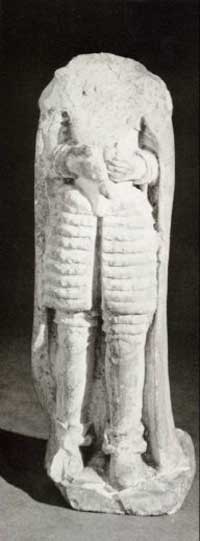 Far left: White clay statue fragment from Charles’ Gift, located aboard the Naval Air Station Patuxent River, Patuxent, Maryland.
Far left: White clay statue fragment from Charles’ Gift, located aboard the Naval Air Station Patuxent River, Patuxent, Maryland.
This figure represents a king dressed in armor holding a cross and orb. Similar statues have been found on sites in England, including at Exeter. All of the known examples seem to have lost their heads and this may relate to the execution of Charles I or the deposing of James II. Charles’ Gift was the property of the Sewall Family, kin of Lord Baltimore.
Historic St. Mary’s City wishes to thank the Naval Air Station Patuxent River for the opportunity to display this unique artifact.
Left: Similar statue from Southhampton, UK
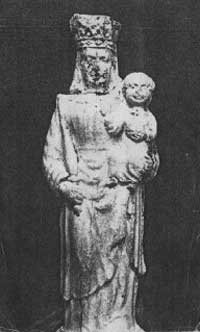
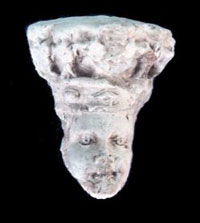 Right: Statue from the Netherlands.
Right: Statue from the Netherlands.
Far right: White clay statue fragment from Garret Vansweringen’s Council Chamber Inn, St. Mary’s City, Maryland.
This fragment matches more complete examples recovered in Holland and outside of Annapolis. It represents a piece of a Madonna and Child statue which would have been owned by a Roman Catholic.
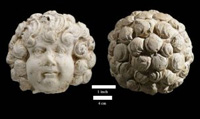
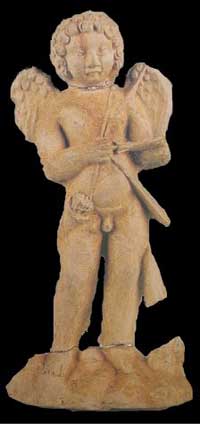 Far left: White clay statue fragments from St. John’s, built by John Lewger 1638, St. Mary’s City, Maryland.
Far left: White clay statue fragments from St. John’s, built by John Lewger 1638, St. Mary’s City, Maryland.
This statue represents a cherub or angel’s head. Cherubs were widely used in both Catholic symbolism and in the newly emerging classical decorations which became popular after Renaissance ideas reached England. The back of the head was discovered in 1974 while the face was found in 2004.
Left: Comtemporary statue from Holland.


